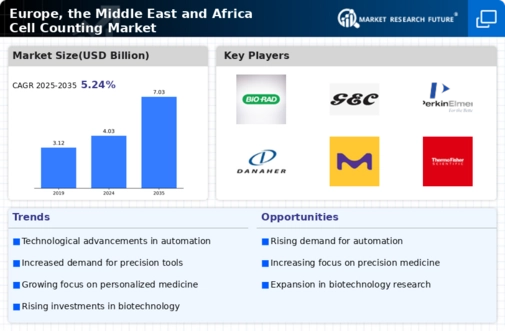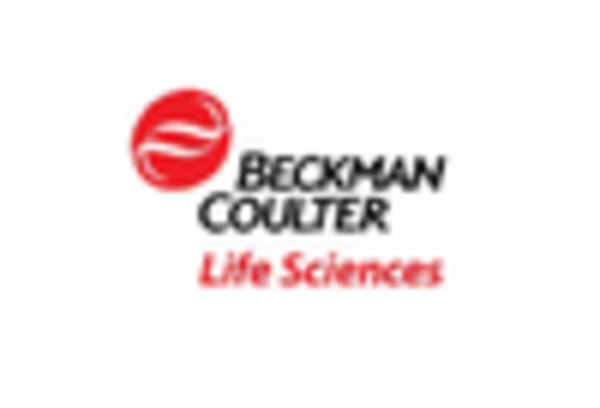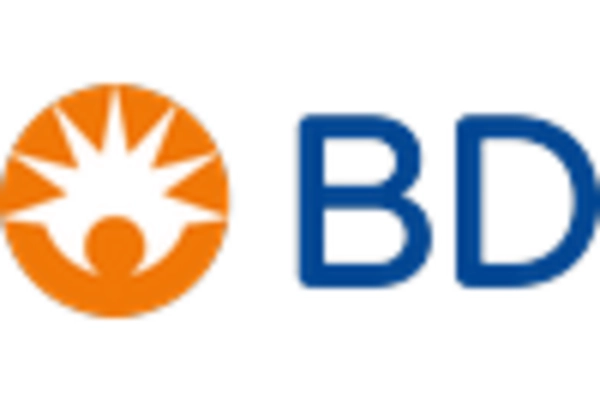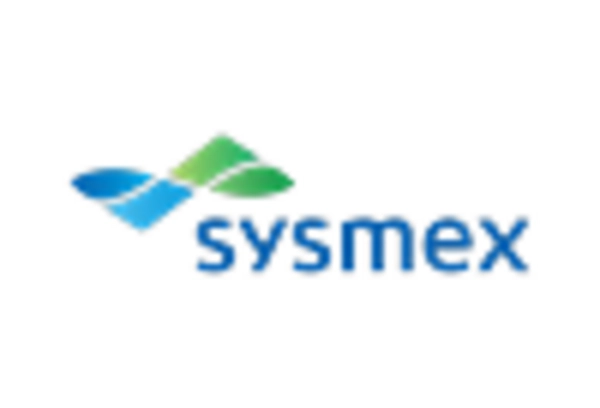Market Share
Europe Cell Counting Market Share Analysis
The EMEA (Europe, Middle East, and Africa) Cell Counting Market is a dynamic sector within life sciences and healthcare, focusing on providing accurate and efficient solutions for cell counting. Companies in this region employ diverse strategies to position themselves favorably and gain a competitive edge in the market. Geographic expansion is one of the Core Strategies in the EMEA Cell Counting Market. The intention of such companies is to create a substantial presence within the region through establishing appropriate offices, set up manufacturing plants and establish lines for goods distribution in various parts. This strategy empowers them to serve numerous markets in Europe, the Middle East and Africa adjusting their services accordingly. The focus on compliance has risen in the EMEA area, and companies work to be in line with strict standards set by regulatory bodies such as the European Medicines Agency (EMA). However, following these regulations not only ensures compliance with the law but is also a reliable way of building trust among clients which results in strong market positioning. Companies operating in the EMEA Cell Counting Market tend to form collaborations with research institutions and universities. These collaborations facilitate research and development ventures, enabling companies to remain on the cutting edge of technological innovativeness while keeping their products relevant to the changing needs in science. Companies that are aiming at gaining a competitive advantage need to invest in innovative cell counting technologies. Adoption of such developments as automated cell counters, fluorescence-based counting approaches and image analysis systems improves the precision and effectiveness of cell count operations providing a variety of clients with advanced solutions. Aware of the various uses cell counting across industries, companies customize their solutions to accommodate specific requirements. Due to customization for pharmaceuticals, biotechnology research and clinical diagnostics businesses serve different industries in their special needs providing new market segments. A trend that companies use in market positioning is an increasing need for the point-of-care testing and portable solutions. Building portable cell counting devices that facilitate user-friendliness and field analysis fulfill the demand for results in real time by healthcare practitioners and researchers. The most successful marketing strategies are carefully tailored to appeal to the various cultures and languages that characterize the EMEA region. Marketing campaigns concerning company cell counting solutions are created that emphasize the advantages of these products taking into account peculiarities and requirements faced by clients in various areas based on Europe, Middle East and Africa. Understanding the need to have a trained user base, companies spend on thorough training and support services. Making sure that customers are competent in handling, as well as reading the results from cell- counting devices increases customer satisfaction and ensures loyalty.
Mergers and acquisitions are strategic moves employed by companies to strengthen their market position. Acquiring complementary businesses or technologies allows companies in the EMEA Cell Counting Market to expand their product portfolios and gain a competitive edge through increased capabilities and expertise.

















Leave a Comment